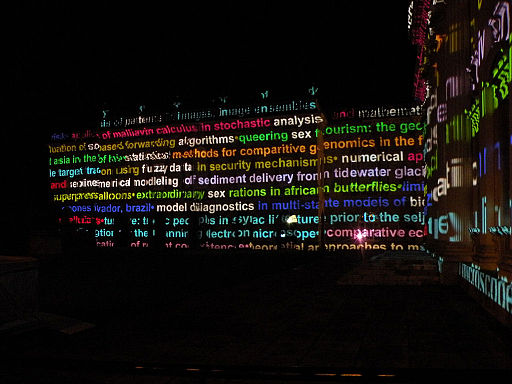Researching the Invisible

Research can present some interesting challenges – and many times those challenges become unanticipated opportunities…
Early into my phase I doctoral work, I slumped into a chair in my supervisor’s corner office overlooking Glasgow’s West End. I’d been exploring sports marketing campaigns and anticipating clearly identifiable stereotypes, or more specifically: racialized and gendered representations. When I “read” the material critically, these relationships were there. Yet, specific examples seemed difficult to pin down – as though some of what I’d remembered from previous views and initial readings of these advertising campaigns was never there in the first place. Even worse, it was difficult to tell if there were any campaigns related to women athletes at all.
My then-supervisor offered rare soothing and sage words: “…sometimes what’s not there is just as important—if not more so—than what IS there.” Although I knew that many materials and social relationships are erased from historical accounts, I had not considered exploring the process in relation to how marketing narratives obscure social relationships. More importantly though, I had not seen the opportunities to explore data “in the negative.”
Suddenly, I could see a much wider and more detailed field! In considering what was not there, decision-making and social hierarchies leaped off the pages and video over which I had been poring. Thinking critically and carefully about research data offers opportunities to assess explicit and implicit social patterns.
Recognizing the opportunities inherent in researching challenges: tracking the ghosts of social relationships
Yesterday, my boss demonstrated the ways SIA digitized collections offer insights into what I’d like to call “invisible social relationships”. For example, researchers—such as those whose notebooks are included in the Field Book project—may have detailed their scientific progress in identifying species and practices conducting research in the field in certain geographic regions. Yet, these field books might not specifically speak to daily or repeating patterns, such as social relationships established between the researchers and local and state political figures in these regions.
If one reads merely the available written text, that is, he or she risks obscuring part of the story; this narrative gap becomes clear, for example, once a corresponding set of data is included: such as images of events a scientist attended. In photographic evidence and media coverage of these events, invisible social relationships that relate to the research practices begin to emerge. These could be benefactors or benefitters from research, or cultural or political allies who are unaffiliated with the research interests of the researcher, or even conspicuous absences even in the photographic material that can tell us more about the invisible social relationships and exchanges. That is to say, the research itself may have had official and unofficial agenda, so the official agenda would be demonstrated in field book records, but secondary, unofficial agenda might be “in the negative” or only determined through several steps of inference. Current researchers might be able to better capture this information and analyze these relationships, if these researchers were able to stay aware and anticipate the opportunities they might come across while doing related subject matter research in archival data.
Invisible social relationships online
Researching in the digital space offers similar challenges with benefits. Within my current research into communication within a sports fandom online, relationships are built in virtual space but they are also obscured within this space. It can be difficult to track “correspondence” between users, especially as communications may be deleted or altered. Careful observation of posts and communication via notes and tags can tell the story of much richer and more complex social relationships – patterns emerging out of what IS said that allow one to identify what is not said to highlight social relationships in the digital space.
Additionally, Invisible social relationships become apparent as one explores patterns of communication within certain virtual spaces, even when there may not be direct communication. Indeed, a second level of invisible social relationships is sometimes proposed by members of the fandom – relationships demonstrated through lack of communication, such as “silence on the line” on twitter or indirect recognition (not mentioning person A but mentioning person B with whom person A spends a great deal of time, etc).
Can you think of an example of people you know IRL (in real life), who know each other, yet whose social relationships might not be discernible from their communication strategies on-line? In what ways could future researchers trace your life and invisible social relationships that are not foregrounded in your own use of digital/social media tools and technologies? What kinds of opportunities might emerge from the challenges you have encountered if/when/in researching on- and off-line?
Image credit to: Keith Edkins [CC-BY-SA-2.0 (http://creativecommons.org/licenses/by-sa/2.0)] (via Wikimedia Commons)
